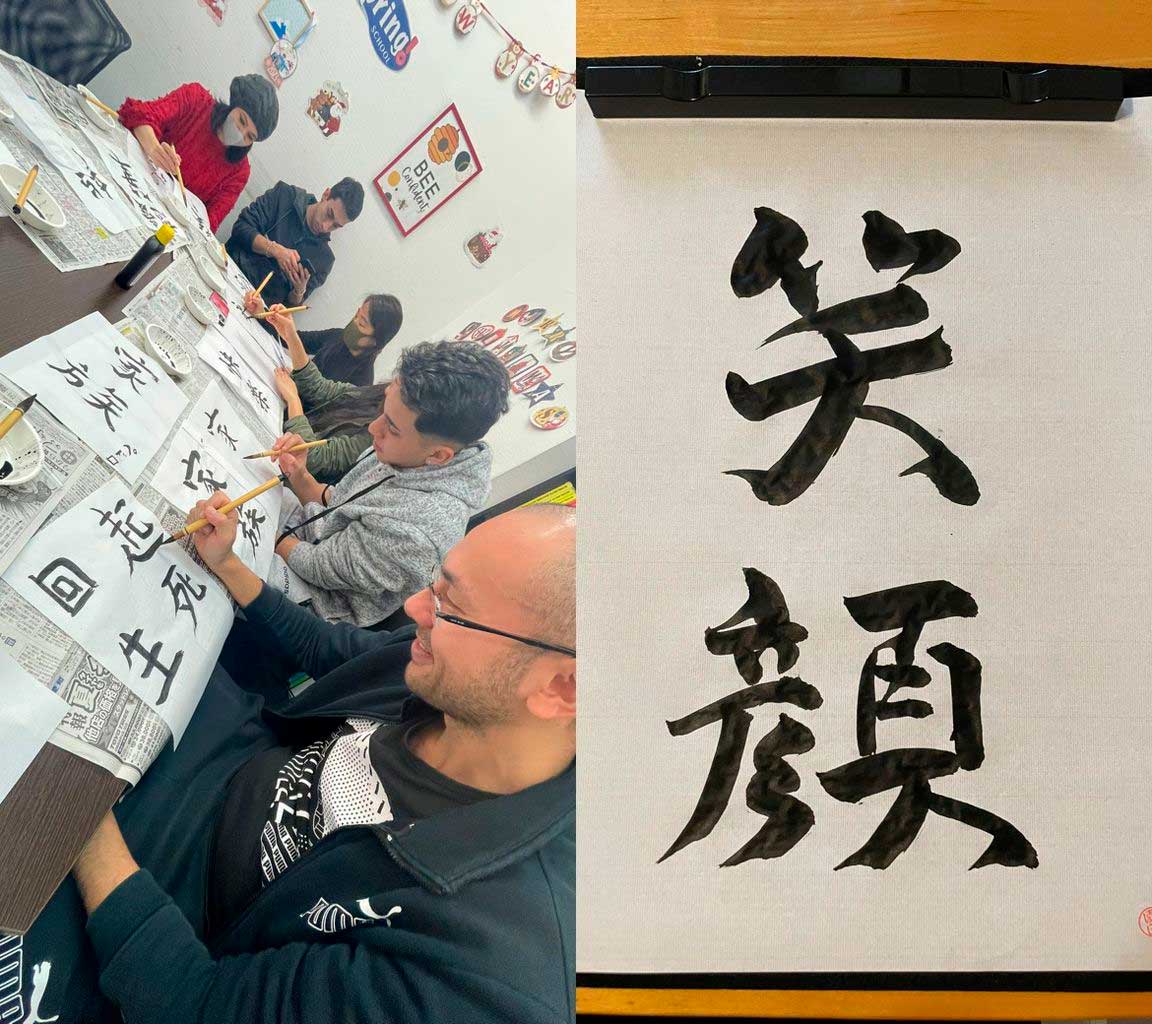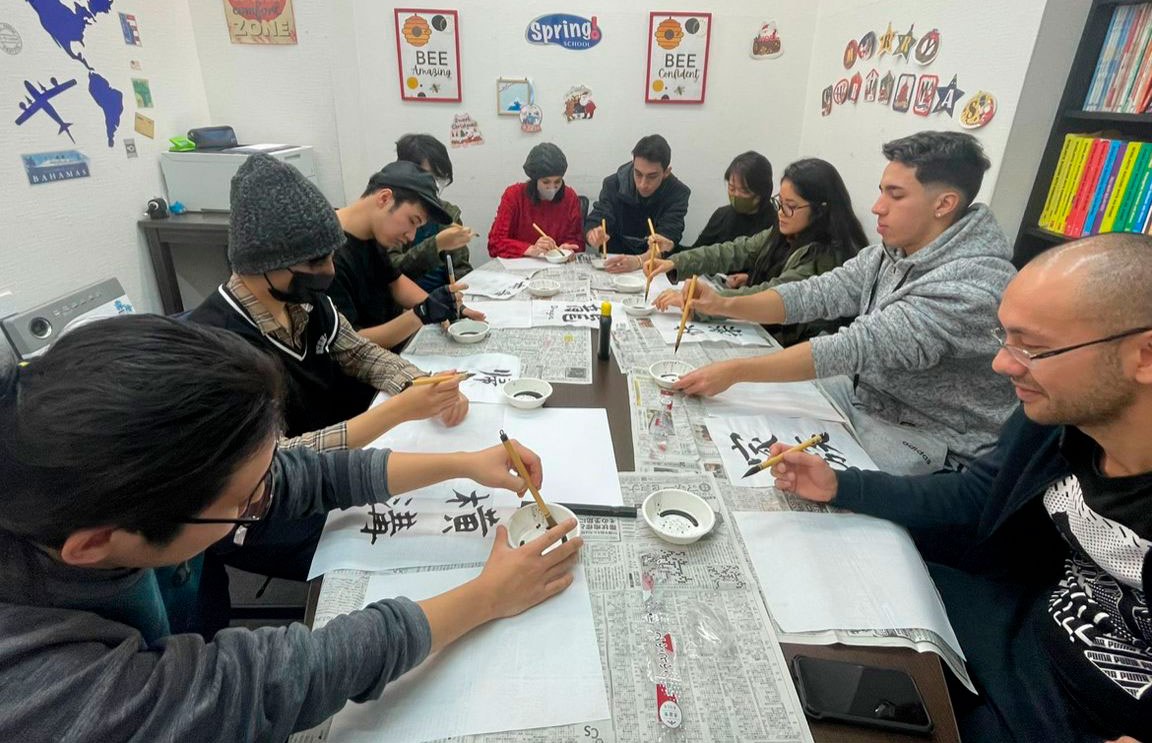Shuuji, Japanese calligraphy
新年おめでとうございます。(Shinnen omedetou gozaimasu). Starting with this sentence, we wish everyone a Happy New Year.
Learning any foreign language involves a wide range of studies, dedication, discipline and love.
The student does not just immerse himself in study books, grammar, vocabulary and texts in his notebook. He immerses himself in the Culture. And the Japanese language and culture are unique.
Learning the Japanese language also requires a great absorption of the Japanese culture present in details, which often escape even the most attentive look.
In Japan, in addition to the arrival of the new year, we celebrate every event and attitude that will be taken in this new year. For example, the first sunrise 初日の出 (hatsu-hinode), the first visit to the temple 初詣 (hatsu-moude), and the first writing or letter of the year 書き初め (kakizome).
Kakizome is usually a lesson in regular schools, where a phrase or word is selected to be written in 習字【しゅうじ】(shuuji), Japanese calligraphy.
Calligraphy, in general, is seen as a beautiful way of writing letters, but in Japan it goes a little further. Calligraphy is seen as an art.
Calligraphy developed in China, which has a kanji culture, and was introduced to Japan in the form of copying sutras, religious teachings in the form of texts, along with Buddhism, in the 6th to 7th centuries, from the Asuka period to the Nara period. .
That is why on December 24, 2023, the Spring School offered a special class (Kaiwa Class) on the End of the Year and a workshop for students at the Toyota Unit, where everyone had the opportunity to learn a little about the history and culture of Shuuji and its differences with 書道 (shodou) which is known as artistic Japanese calligraphy.
Each of the 19 participants was able to choose a phrase or word they would like to write. After some explanations and demonstrations, we started practicing.

Spring School – Special class (Kaiwa Class) about the End of the Year
There are a series of rules when a Japanese ideogram is written, whether it is a kanji or even a kana (hiragana, katakana), and during this workshop, students learned that not only rules are necessary in shuuji, but also inner strength, the presence and personality.
Along with calligraphy, techniques on how to make brushes, ink and paper were also absorbed. It is extremely satisfying to know that many foreign students are interested in this culture that today, even among the Japanese, is declining.
We also remember the importance of integrating into the culture and traditions of the country in which we live. Did you find it interesting? Want to learn more?
Come with us and SPRING YOUR LIFE.
By: Bijuh Sensei.


